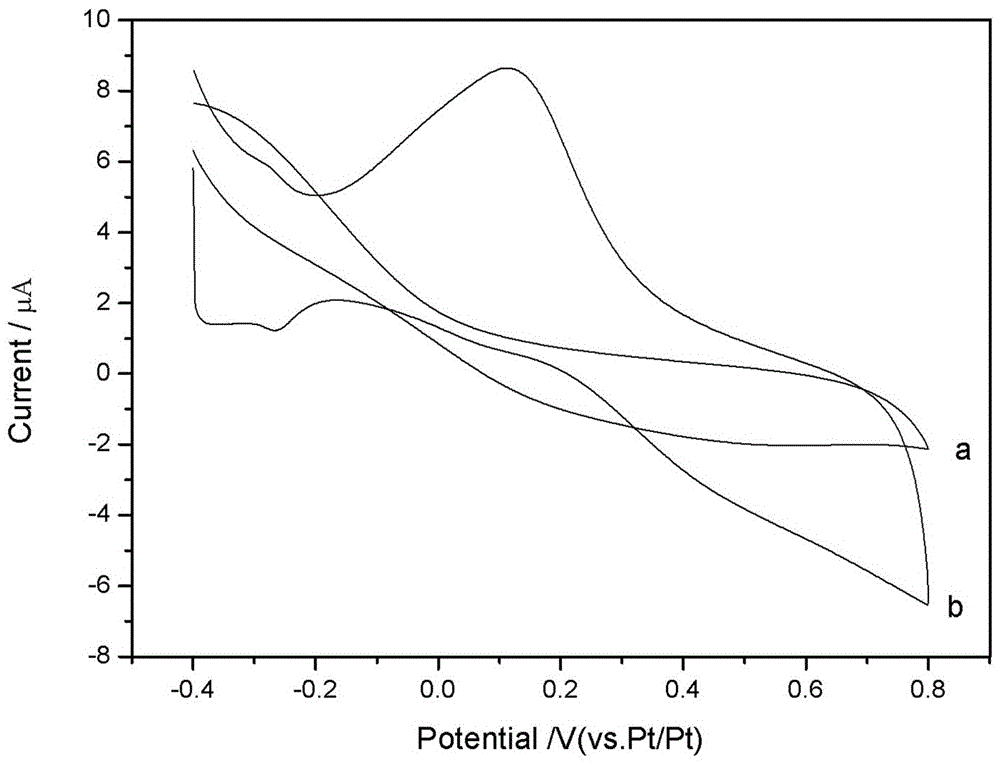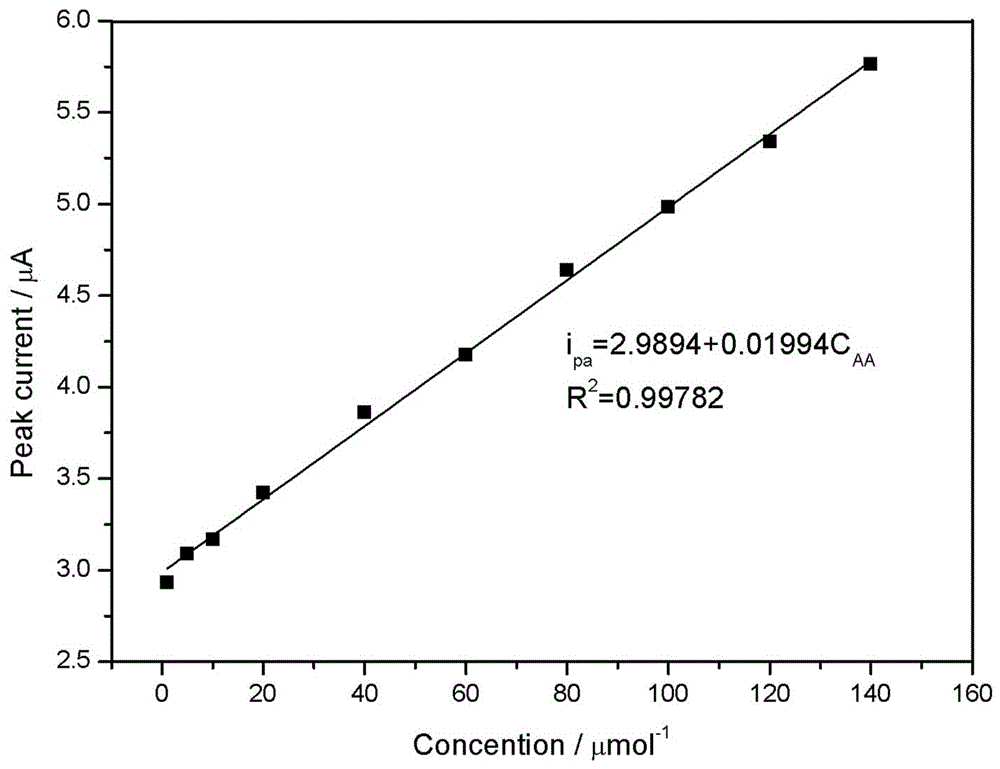Electrochemical preparation method for L-ascorbic acid detection
A technology of ascorbic acid and functionalization, applied in the direction of material electrochemical variables, measuring devices, scientific instruments, etc., can solve problems such as high condition requirements, physical damage, and complicated method operations
- Summary
- Abstract
- Description
- Claims
- Application Information
AI Technical Summary
Problems solved by technology
Method used
Image
Examples
Embodiment 1
[0047] An electrochemical preparation method for the detection of L-ascorbic acid AA, using a functionalized magnetic carbon-based-polymer microsphere composite modified glassy carbon electrode Fe 3 o 4 / GNS / MPCE / Pt is used as the working electrode to measure the concentration of L-ascorbic acid in the solution, the steps are as follows:
[0048] 1) Add the L-ascorbic acid sample to be tested into the phosphate buffer solution PBS to prepare the L-ascorbic acid solution, which is used as the electrolyte, and the pH of the electrolyte is controlled to be 6.0.
[0049] 2) Glassy carbon electrode Fe modified with functionalized magnetic carbon-based polymer microsphere composite 3 o 4 / GNS / MPCE / Pt is used as working electrode, Ag / AgCl electrode is used as reference electrode, platinum wire electrode is used as auxiliary electrode, placed in the electrolyte described in 1), and the scanning speed is 100mVs -1 Electrochemical testing.
[0050] The concentration range of L-ascor...
Embodiment 2
[0053] The glassy carbon electrode Fe modified by the functionalized magnetic carbon base-polymer microsphere composite material described in embodiment 1 3 o 4 / GNS / MPCE / Pt, the preparation steps are as follows:
[0054] 1) Grinding and polishing the glassy carbon electrode to make the base surface smooth and clean, then ultrasonically cleaning them with absolute ethanol and distilled water, and drying at room temperature to obtain a pretreated glassy carbon electrode; the polished and polished glassy carbon electrode is suspended with alumina Grinding and polishing the glassy carbon electrode.
[0055] 2) Synthesis of Fe by chemical co-precipitation method 3 o 4 magnetic nanoparticles, and the use of the surfactant sodium undecylenate NaUA on the magnetic nanoparticles Fe 3 o 4 Surface modification was carried out to obtain NaUA-modified Fe 3 o 4 ferrofluid.
[0056] The chemical co-precipitation method synthesizes Fe 3 o 4 Magnetic nanoparticles, the steps are as ...
Embodiment 3
[0080] According to the method described in Example 1, the difference is that the pH of the phosphate buffer solution electrolyte is 6.5, and the other treatment methods are the same.
PUM
 Login to View More
Login to View More Abstract
Description
Claims
Application Information
 Login to View More
Login to View More - R&D
- Intellectual Property
- Life Sciences
- Materials
- Tech Scout
- Unparalleled Data Quality
- Higher Quality Content
- 60% Fewer Hallucinations
Browse by: Latest US Patents, China's latest patents, Technical Efficacy Thesaurus, Application Domain, Technology Topic, Popular Technical Reports.
© 2025 PatSnap. All rights reserved.Legal|Privacy policy|Modern Slavery Act Transparency Statement|Sitemap|About US| Contact US: help@patsnap.com



